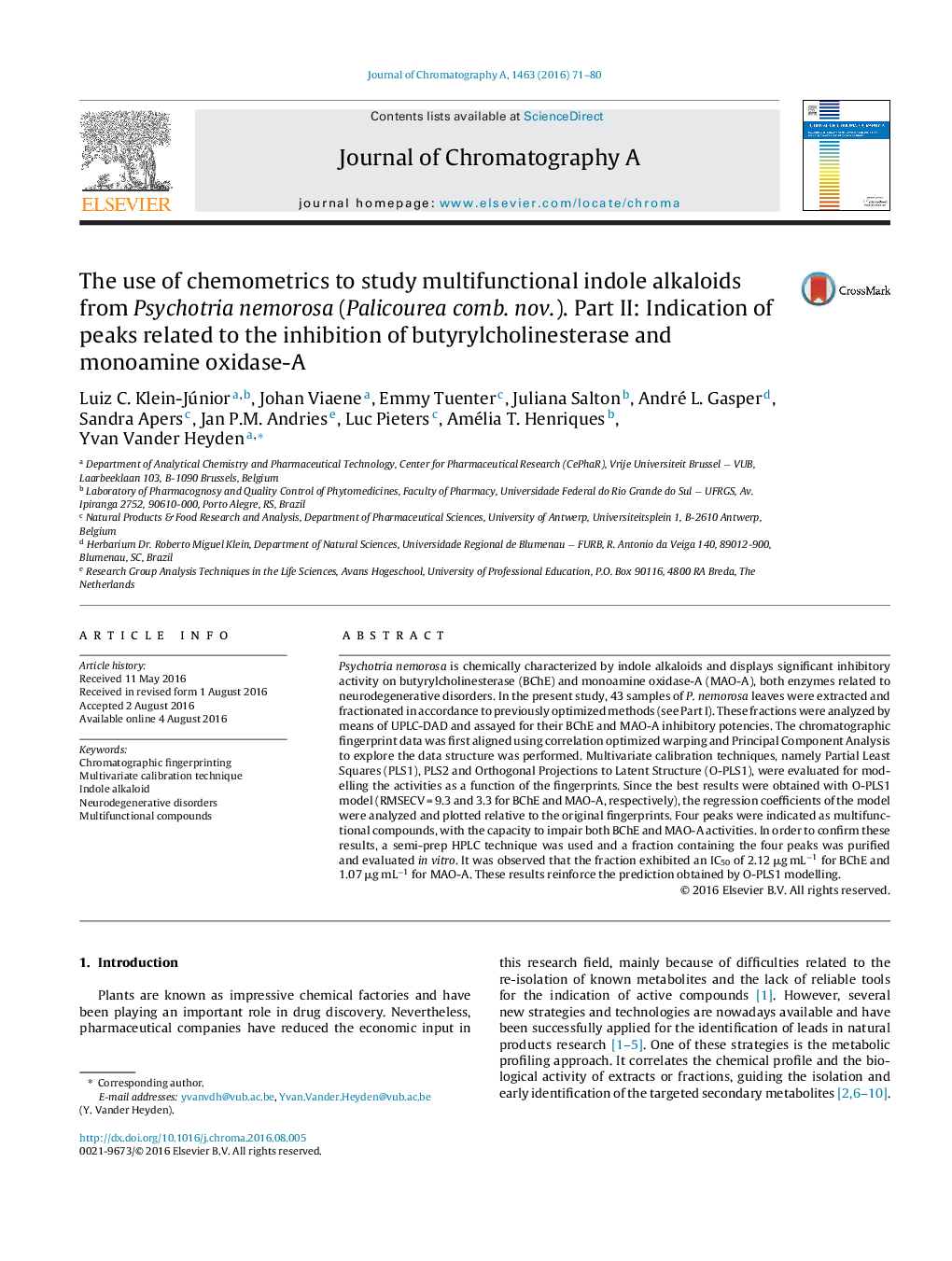| Article ID | Journal | Published Year | Pages | File Type |
|---|---|---|---|---|
| 1198332 | Journal of Chromatography A | 2016 | 10 Pages |
•UPLC analysis and pharmacological evaluation of 43 alkaloid fractions.•Comparison between PLS1, PLS2 and O-PLS1 data modelling.•Indication by O-PLS1 of peaks related to BChE and MAO-A inhibition.•LC-SPE-NMR analysis of the indicated peaks.
Psychotria nemorosa is chemically characterized by indole alkaloids and displays significant inhibitory activity on butyrylcholinesterase (BChE) and monoamine oxidase-A (MAO-A), both enzymes related to neurodegenerative disorders. In the present study, 43 samples of P. nemorosa leaves were extracted and fractionated in accordance to previously optimized methods (see Part I). These fractions were analyzed by means of UPLC-DAD and assayed for their BChE and MAO-A inhibitory potencies. The chromatographic fingerprint data was first aligned using correlation optimized warping and Principal Component Analysis to explore the data structure was performed. Multivariate calibration techniques, namely Partial Least Squares (PLS1), PLS2 and Orthogonal Projections to Latent Structure (O-PLS1), were evaluated for modelling the activities as a function of the fingerprints. Since the best results were obtained with O-PLS1 model (RMSECV = 9.3 and 3.3 for BChE and MAO-A, respectively), the regression coefficients of the model were analyzed and plotted relative to the original fingerprints. Four peaks were indicated as multifunctional compounds, with the capacity to impair both BChE and MAO-A activities. In order to confirm these results, a semi-prep HPLC technique was used and a fraction containing the four peaks was purified and evaluated in vitro. It was observed that the fraction exhibited an IC50 of 2.12 μg mL−1 for BChE and 1.07 μg mL−1 for MAO-A. These results reinforce the prediction obtained by O-PLS1 modelling.
